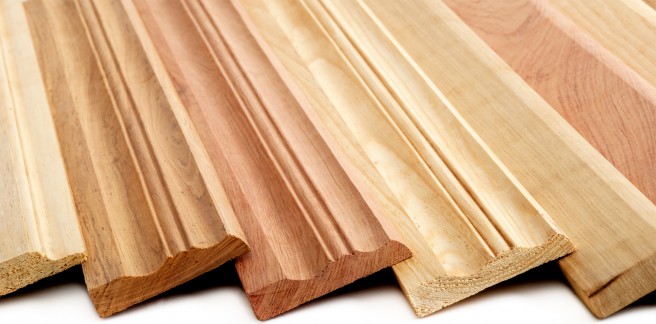Skirting, cornices and coving

From period times to those more contemporary, timber and plaster mouldings have graced the most stylish and chic of interiors, decorating walls, doors and windows. Decorative mouldings such as skirtings, cornices and coving remain an ever popular finishing detail; extremely versatile and durable, enhancing the aesthetics of any interior and offering a level of detail that really accents the status of a room. Skirting and mouldings have a range of uses, most of which came into being during the Victorian era.
Skirting boards (or baseboards) are the only surviving aspect of three interior timber items found in Victorian houses, the others being picture and dado rails, and it has quite a history. Originally, skirting was a functional piece, used for three main purposes; firstly, to hide the messy bottom edge of plastered walls, which was much less precise than today’s smooth versions; secondly, to protect the plasterwork itself from any damage from heavy furniture and traffic; and thirdly, to hide any evidence of rising damp. However, whilst it primarily had practical functions, the Victorians never passed up an opportunity to show off status and wealth, so rooms which were likely to be visited by guests would have larger sized skirting boards with more complex and intricate details. Together with mouldings and coving these details were meant to imitate ornate, classical decoration like that seen at the top and bottom of Greek and Roman columns, so for highest impact these features were used together. Today, skirting board is still an absolute must in any home and is readily available in a number of styles and finishes. Interior coving and cornices are both examples of decorative moulding and help bring definition to the spaces they are used in; a key aspect of Victorian interior design. Coving is used to cover the line between two surfaces, most often where a wall meets a ceiling. Old fashioned coving creates a curve between the top of thewall and the ceiling and is usually painted white to create an approximate mirror image of the skirting board at the other end of the wall. This creates a seamless finish and is still a great way to update the design of any room. A cornice on the other hand, whilst much like coving, extends out into the room like a ledge. These are more of a statement piece or specific design feature than the coving and were traditionally seen with ‘egg and dart’ or fleur-de-lys patterns. However, cornice certainly still has a place within the modern home and lots of contemporary styles are available, including uplighting cornice which is open at the top and fixed to the wall approximately 15-20cm from the ceiling, with LED’s or tube lights fitted inside - an elegant way to add the perfect finishing detail to your room.

